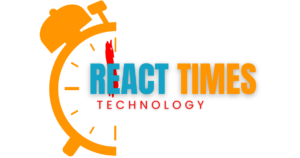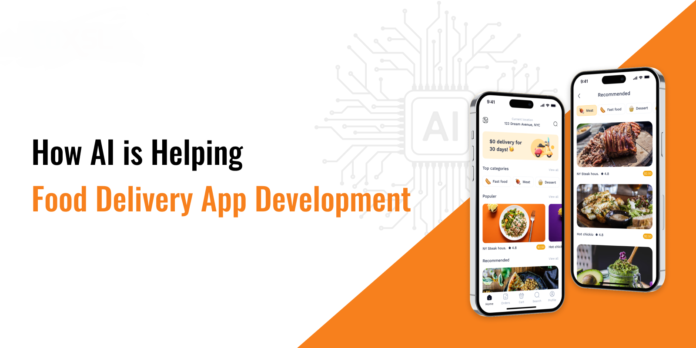Artificial Intelligence (AI) has revolutionized various industries, and food delivery is no exception. In recent years, the demand for food delivery services has soared, prompting a significant transformation in how these services are developed and operated. With the integration of AI, food delivery apps have become smarter, more efficient, and capable of providing an enhanced user experience. In this blog, we will explore the various ways AI is used in food delivery app development and how it benefits both customers and businesses. We will also highlight the factors influencing mobile app development cost and the role of a food delivery app development company in creating innovative solutions.
1. Personalized User Experience
One of the most significant benefits of incorporating AI in food delivery app development is the ability to offer a personalized user experience. AI algorithms analyze user data, such as browsing history, past orders, and search preferences, to provide personalized recommendations. For instance, if a user frequently orders vegan food, the app’s AI engine can prioritize vegan options or suggest new vegan restaurants.
AI-driven personalization extends beyond food recommendations. It can also tailor the app’s interface, promotional offers, and notifications based on user behavior. By understanding the preferences and needs of individual users, food delivery apps can enhance customer satisfaction, leading to increased retention rates and higher customer lifetime value.
2. Improved Search and Discovery
AI plays a crucial role in enhancing the search and discovery features of food delivery apps. Traditional search methods may yield numerous results that may not align with user preferences. AI-powered search engines, however, use natural language processing (NLP) to understand user queries more effectively and deliver relevant results.
For example, if a user searches for “spicy Mexican food,” the AI algorithm can interpret the user’s intent and filter results accordingly, showing restaurants and dishes that match the description. Furthermore, machine learning (ML) models can learn from user interactions to refine search results over time, improving accuracy and relevance.
3. Efficient Order Management and Processing
Efficient order management is critical to the success of any food delivery app. AI technologies can streamline order processing by automating various tasks, such as order placement, confirmation, and tracking. Chatbots, powered by AI, can handle customer inquiries, provide order updates, and resolve issues in real-time, reducing the need for human intervention.
AI can also predict peak order times based on historical data, allowing restaurants and delivery partners to prepare in advance. This helps in reducing wait times, minimizing errors, and ensuring timely deliveries, which is crucial for customer satisfaction.
4. Dynamic Pricing and Promotions
Dynamic pricing is another area where AI is making a significant impact in food delivery app development. AI algorithms analyze various factors, such as demand, weather conditions, time of day, and local events, to adjust prices dynamically. For example, during peak hours or adverse weather conditions, prices may increase due to higher demand and lower supply.
AI can also optimize promotional strategies by analyzing user behavior and preferences. Personalized promotions, such as discounts on frequently ordered items or exclusive deals for loyal customers, can be automatically generated by AI algorithms. This targeted approach not only boosts sales but also enhances user engagement and loyalty.
5. Route Optimization for Delivery Drivers
One of the most challenging aspects of food delivery is ensuring that food reaches customers promptly and in optimal condition. AI-powered route optimization algorithms help delivery drivers navigate the most efficient paths, taking into account real-time traffic conditions, road closures, and weather forecasts.
By minimizing delivery times, AI-driven route optimization reduces fuel consumption, lowers operational costs, and enhances the overall customer experience. It also allows delivery drivers to complete more orders in less time, increasing their earnings and the profitability of the delivery service.
6. Enhanced Customer Support
Customer support is a critical component of any food delivery app. AI-driven chatbots and virtual assistants can provide instant support to customers, addressing common queries and issues without human intervention. These AI tools are equipped with NLP capabilities to understand customer concerns and provide relevant solutions.
For complex issues that require human intervention, AI systems can assist by categorizing and prioritizing customer requests, ensuring that urgent matters are addressed promptly. This hybrid approach to customer support enhances efficiency and improves customer satisfaction.
7. Fraud Detection and Prevention
In the food delivery industry, fraud can occur in various forms, such as fake orders, payment fraud, or promotional abuse. AI-powered systems can detect and prevent fraudulent activities by analyzing patterns and anomalies in user behavior. For example, if multiple orders are placed from a single device with different payment methods, the AI system may flag the activity as suspicious and trigger a verification process.
By mitigating fraud, AI not only protects the business from financial losses but also builds trust with customers, who can be assured of a secure and reliable service.
8. Predictive Analytics for Inventory Management
For restaurants partnered with food delivery apps, managing inventory effectively is crucial to avoid food wastage and ensure availability. AI-driven predictive analytics tools can forecast demand for specific dishes based on historical data, trends, and external factors such as holidays or special events.
By accurately predicting demand, restaurants can optimize their inventory levels, reducing wastage and ensuring they can meet customer demand. This leads to cost savings and more sustainable operations.
9. Voice-Activated Ordering
With the rise of smart devices and voice assistants like Amazon Alexa and Google Assistant, voice-activated ordering is becoming a popular feature in food delivery apps. AI technologies, particularly NLP, enable users to place orders using voice commands, providing a hands-free and convenient ordering experience.
This feature is especially beneficial for users who may be multitasking or unable to use their hands to operate their mobile devices. Voice-activated ordering also makes the app more accessible to visually impaired users, broadening the app’s user base.
10. Sentiment Analysis for Feedback and Reviews
Customer feedback and reviews are invaluable for understanding user satisfaction and identifying areas for improvement. AI-powered sentiment analysis tools can analyze customer feedback and reviews to gauge overall sentiment and identify recurring themes or issues.
For instance, if multiple reviews mention delays in delivery, the AI system can flag this as an area of concern for further investigation. By leveraging sentiment analysis, food delivery apps can proactively address customer concerns, improve their services, and maintain a positive brand reputation.
11. Optimizing Mobile App Development Cost
Integrating AI technologies into a food delivery app can impact the overall mobile app development cost. While the initial investment in AI tools and infrastructure may be higher, the long-term benefits, such as improved efficiency, reduced operational costs, and enhanced customer satisfaction, often outweigh the costs. A reputable food delivery app development company can help businesses strategically implement AI solutions to maximize ROI while keeping development costs in check.
Factors influencing mobile app development cost include the complexity of AI features, the quality of data used for training AI models, and the scalability of the AI solutions. Working with an experienced food delivery app development company ensures that businesses receive a customized solution that meets their needs and budget.
12. The Role of a Food Delivery App Development Company
A specialized food delivery app development company plays a crucial role in leveraging AI technologies to create innovative and user-friendly apps. These companies possess the technical expertise and industry knowledge required to implement AI-driven solutions effectively. They can provide end-to-end services, from conceptualization and design to development and deployment, ensuring a seamless integration of AI features.
Moreover, a food delivery app development company can offer valuable insights into market trends, customer preferences, and competitive landscape, enabling businesses to stay ahead of the curve. By partnering with a trusted development company, businesses can navigate the complexities of AI integration and achieve their goals in a cost-effective and efficient manner.
Conclusion
AI is reshaping the landscape of food delivery app development, offering a myriad of benefits, from personalized user experiences and efficient order management to dynamic pricing and enhanced customer support. By integrating AI technologies, food delivery apps can provide a superior experience to customers while optimizing operational efficiency and reducing costs.
However, the successful implementation of AI requires a strategic approach, and partnering with a reputable food delivery app development company is key. These companies bring the technical expertise and industry knowledge needed to create innovative solutions that leverage AI’s full potential. As the demand for food delivery services continues to grow, businesses that embrace AI will be well-positioned to thrive in this competitive market.
By considering the mobile app development cost and working with experienced professionals, businesses can develop cutting-edge food delivery apps that not only meet but exceed customer expectations. The future of food delivery is undoubtedly AI-driven, and those who adapt to this trend will reap the rewards.

